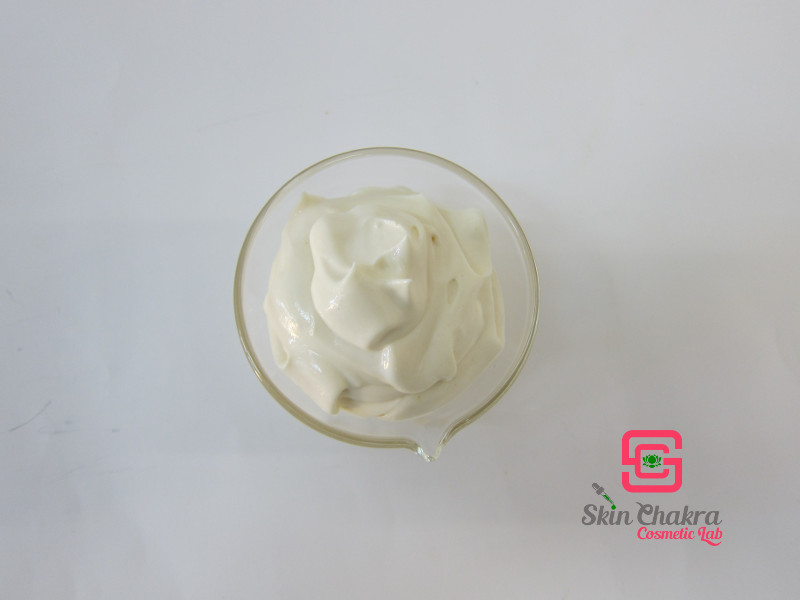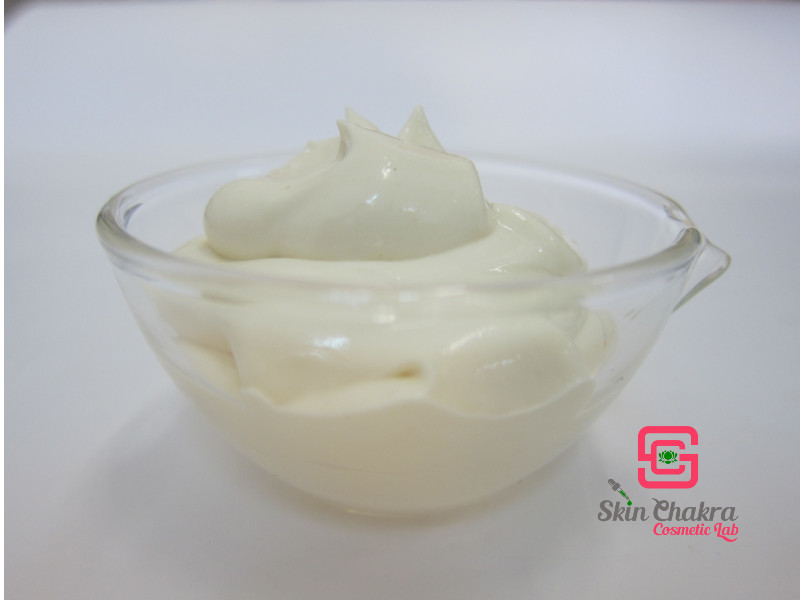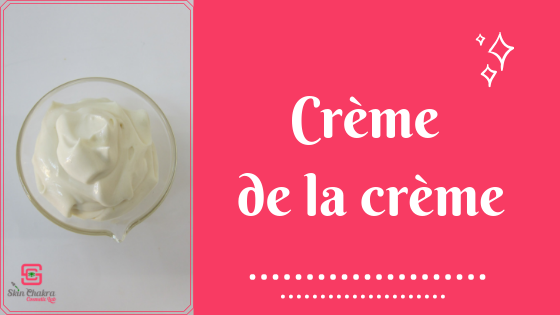For decades there were anionic and nonionic emulsifiers the only choice for making emulsions and still the majority of emulsifiers are either anionic or nonionic or a mix of the two.
Emulsense (do not mistake this with Emulsense HC) is a rather new (well it's on the market for less than a decade) plant based, Ecocert conform, palm free and cationic emulsifier which has turned my knowledge and perception of emulsifiers totally upside down.
To begin with, this is a proprietary blend of a cationic fatty ester and a fatty alcohol based on brassica (cabbage family).
The INCI name is exactly the same as by Emulsense HC (which is used in hair conditioners) but the composition is slightly different.
INCI Name: Brassicyl Isoleucinate Esylate (and) Brassica Alcohol
Brassica alcohol is a blend of fatty alcohols with a carbon chain length between C16-C24. As a comparison: Myristyl alcohol is a C14 alcohol and cetyl alcohol is a C16 alcohol. This means, this ingredient is not only an emulsifier, it works as a refatting agent and emulsion stabilizer as well.
This emulsifier creates a dry-silky skin feel uncomparable to any anionic or ninionic emulsifier I have already worked with. The viscosity is variable between a low viscosity emulsion to a high viscosity rich cream depending on the oil phase concentration and nature.
This is for example a low viscosity emulsion made with 5% emulsifier, 20% oil and no additional wax, butter or fatty alcohol. The yellow colour comes from the camelina oil and not from the emulsifier.

For this tutorial, I wanted to prepare a rich and high viscosity cream. I added plum butter and brassica alcohol to increase the viscosity and enrich the texture and added oat silk to create a dry emolliency and silky texture despite the high viscosity.
The result is quite satisfying as you see.

Formulation:
| Phase A |
|
| Deionized water |
to 100,0% |
| Palm-free glycerin |
3,0% |
| Panthenol |
1,0% |
| L-Arginin |
0,3% |
| Natural chelator PA-3 |
0,1% |
| Phase B |
|
| Macadamia oil |
10,0% |
| plum butter |
5,0% |
| Emulsense |
5,0% |
| brassica alcohol |
2,0% |
| Olive squalane |
3,0% |
| oat silk |
3,0% |
| Tocopherol |
0,5% |
| Phase C |
|
| Raspberry CO2 extract |
1,0% |
| Liquid vit C |
0,5% |
| Pro vit D |
0,2% |
| Rosemary CO2 extract |
0,1% |
| Phase D |
|
| Spectrastat G2-N |
1,0% |
| Geranium rose oil |
0,3% |
| Frankincense oil |
0,1% |
| Bergamot oil |
0,1% |

Procedure:
1- Heat phase A and B separately in a water bath between 65-70 oC
2- When both phases are almost the same temperature and phase B is completely melted stop heating and ad phase B to A. Homogenize for a few minutes
3- Start cooling while stirring.
4- Blend phase C in another beaker and stir to dissolve pro vit D
5- When the temperature reaches around 40 oC add phase C and then phase D. Continue stirring
6- Continue stirring till the cream completely cools down
7- Prepare a 10% dispersion in distilled water and measure the pH. In our case it was 4,5 and that is quite in range for this system.
8- Take your micro kit and stability samples and fill the rest in a suitable container.
BeHappy and have fun




